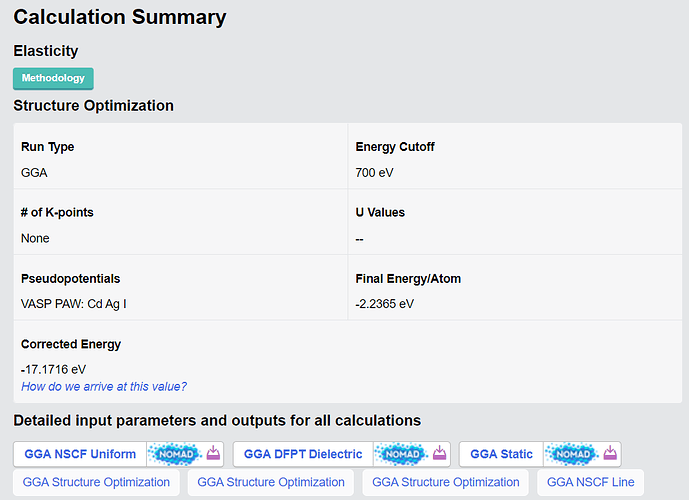The reference for the elastic properties is:
de Jong M, Chen W, Angsten T, Jain A, Notestine R, Gamst A, Sluiter M, Ande CK, van der Zwaag S, Plata JJ, Toher C, Curtarolo S, Ceder G, Persson KA, Asta M. Charting the complete elastic properties of inorganic crystalline compounds. Scientific Data 2: 150009 (2015) | doi:10.1038/sdata.2015.9.
There is also methodology information given in Elastic Constants | Materials Project Documentation.
I had trouble finding any discussion of the runtime required for the elasticity properties.
On a compound’s page (e.g. mp-1025377: Cd(AgI2)2 (Tetragonal, I-42m, 121)), the following information is present:
Calculation Summary
Elasticity
Methodology
Structure Optimization
Run Type
GGA
Energy Cutoff
700 eV
# of K-points
None
U Values
--
Pseudopotentials
VASP PAW: Cd Ag I
Final Energy/Atom
-2.2365 eV
Corrected Energy
-17.1716 eV
How do we arrive at this value?
Detailed input parameters and outputs for all calculations
GGA NSCF Uniform GGA DFPT Dielectric GGA Static
GGA Structure Optimization
GGA Structure Optimization
GGA Structure Optimization
GGA NSCF Line
Clicking into each of the links for “detailed input parameters and outputs for all calculations”, I’m having trouble seeing which one would correspond to calculation of the elastic properties. I might be missing something obvious.
